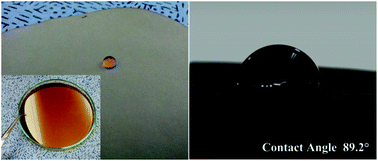A simple and economical method using graphene oxide for the fabrication of water/oil separation papers†
Abstract
We present a facile method using graphene oxide for the preparation of water/oil separation papers. We coated regular paper with graphene oxide by spraying or soaking, and performed thermal annealing at 180 °C for 1–3 hours. The thermal treatment transforms the paper from hydrophilic to hydrophobic due to the thermal reduction of graphene oxide, and thus water can hardly permeate through the separation paper. In contrast, low polarity organic solvents and oil can easily pass through the separation paper. The water/oil separation papers have very good reusable stability. The separation selectivity is above 99% for different mixtures of oily solvents and water.



 Please wait while we load your content...
Please wait while we load your content...